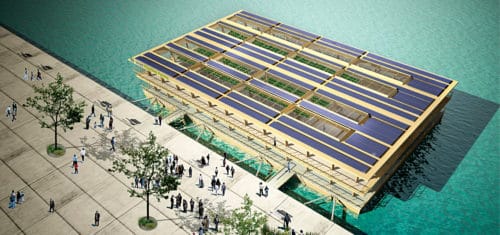Although carbon-neutral initiatives are increasing, without effective implementation, the world target of reaching zero hunger by 2030 will not be possible.
Technology has become an indispensable part of our lives, but we still find ourselves complaining about minor inconveniences every now and then. While for most of us imagining life without technology is difficult, there is a large population that is struggling to have access to even basic human needs. According to a 2019 report by Food and Agriculture Organization of the UN, more than 820 million people are still suffering from hunger globally and the number is continuously rising. One such example is Zimbabwe, where more than five million people are currently facing this problem.
Amidst dwindling natural resources, we need to consider viable solutions to meet global demands of nutritional food for the growing population and improve the livelihood of people. What are the major reasons behind food scarcity, and how solar can make a significant impact in tackling the issue?
Unsustainable ways of farming involve deforestation and greenhouse gas emissions, which result in climate change. Unsuitable weather conditions, such as droughts and floods, continue to ruin crops. Proper utilisation of available lands and irrigation is the need of the hour to solve this issue. As solar panels become more cost-effective every day, these can not only aid in achieving this aim but also reduce the carbon footprint.

For instance, SunCulture makes affordable solar-powered machines for irrigation. The machines use solar panels to pump water from any source in the vicinity. The amount of water available per day depends on distance between the pump and source. A mobile app is used to design customised irrigation systems with inbuilt sprinklers for farmers, thereby giving a high yield while conserving water.
Many such companies as Golden State Clean Energy have been converting unused lands to solar farms. Electricity produced is used for powering various agricultural activities.
Unoccupied space in these large patches of land can be further utilised for farming. An example is north-eastern Japan where farms have grown cloud-ear mushrooms below solar panels, since these mushrooms thrive in dark and humid conditions.
A smart floating farm is another alternative to land-based farming. The top layer in this farm has photovoltaic cells to generate electricity. Openings for the lower layer ensure that sunlight reaches the plants. Other renewable energy sources like wind turbines and systems for power generation from waves are also available. Besides a rainwater collector and a water recycling system is present to meet water demands. Plants are grown in a hydroponic system without soil, thereby excluding the requirement for suitable land conditions. Ground level is used for fishing and storage. Benefits include no dependence on rainfall, reduced imports and faster time-to-market.
Many a time, even after sufficient cultivation, food wastage at one place results in deficiency in another. One of the main reasons behind this is absence of cold storage, as there is a lack of access to electricity in many underdeveloped areas in developing countries. Solar refrigerators, like ColdHubs, provide a sustainable way of storing perishable food items and can reduce wastage significantly by increasing their shelf life through heavy insulation. Thermal energy from sunlight is sufficient to convert the refrigerant from gaseous form to liquid, which returns to gaseous form once heat is removed. Operational cost gets reduced due to higher energy efficiency and absence of electrical source or DC to AC converter.
We all know how plants make their food through photosynthesis. Now, scientists have found a way to use carbon-dioxide and sunlight in a similar manner. In 2017, Lappeenranta University of Technology and VTT Technical Research Centre of Finland jointly produced a protein using carbon-dioxide and electricity from a clean source of energy for fermentation. This protein can be fed to cattle as well.
Finland-based Solar Foods plans to bring the protein powder prepared by extracting carbon-dioxide from air using carbon-capture technology (like that provided by Global Thermostat), water, nutrients and vitamins under the name Solein into the market by 2021. As per reports, with fifty per cent protein, 20 to 25 per cent carbohydrates and five to ten per cent fats, this could be an ingredient in a wide variety of applications.
Although such carbon-neutral initiatives are increasing, without effective implementation, the world target of reaching zero hunger by 2030 will not be possible.








